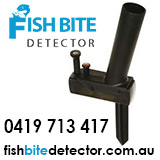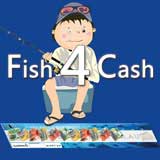Species ID
View AllMulloway

The mulloway is an immensely popular and highly sought-after target species amongst Australian anglers, and this fact is reflected in the number of common and regional names used to describe the fish. These include jewfish, jewie or jew (particularly in NSW and Queensland), river kingfish or river king (WA), and butterfish or mully (SA). Smaller specimens are sometimes called soapies (a reference to their soft flesh), and mid-sized or sub-adult mulloway are commonly referred to as school jewies, especially in the eastern states.
Members of a world-wide group of fish known as croaker or drum (in recognition of their ability to produce a distinctive croaking or drumming sound by vibrating their swim bladders), our mulloway are closely related to international species such as the South African kob, European meagre and American white seabass and red drum (redfish). Mulloway can potentially exceed 2m in length and 70kg in weight, but are more common at weights up to 30kg.
Other Names
Mulla, Jewfish, Jew, Jewies, Croakers, Soapy Jew, School Jew, Silver Jewfish, River Kingfish, Silver Kingfish, Kingfish, Butterfish, Japanese Meagre, Southern Meagre
Where to fish
Their habitat range extends from the upper tidal limits of coastal rivers in near-drinkable water to reefs and offshore gravel beds many kilometers from the coast. They are particularly fond of hunting in river mouths and adjacent coastal areas along rocky foreshores and beaches where baitfish and squid are abundant.
How to target
Mulloway are predators and occasional scavengers, feeding primarily on smaller fish, squid, octopus, prawns, marine worms and crabs. They do a great deal of their hunting under cover of darkness, but will also feed during daylight hours, especially in dirty or aerated water and under low light conditions.
These relatively cautious, schooling fish are best targeted using live or very fresh baits of whole or cut fish, squid and large prawns or bunches of marine worms such as beach worms. They also respond well to lures and flies at times, and are a very popular target amongst sport fishers using soft plastics.
Try concentrating your efforts around the change of tide within a few days of the full and new moon phases. Most importantly fish regularly. Persistence pays off when targeting mulloway, stick at it and eventually you’ll land the trophy fish you’re after.
Rod and reel
Ideal tackle for targeting mulloway is dependent upon terrain and the size of fish likely to be encountered. In open areas of larger estuaries or bays, a 3000 to 5000-size spinning reel or an overhead (baitcaster) reel with a similar line capacity will do the job when matched to a 2 to 2.5m rod with a relatively fast taper.
For heavy rock, surf and breakwater fishing, many angler prefer heavier tackle and, on the east and west coasts, sidecast reels on longer rods (up to 4m in length) remain popular.
Line and leader
The majority of mulloway are taken on lines with rated breaking trains between about 5 and 15kg (monofilament or braid). In open water, they can sometimes be landed on much lighter tackle, despite being a powerful adversary capable of making long, sustained runs when hooked. Around line-cutting cover such as rocks and jetty or bridge pylons, heavier gear may be required.
While mulloway have strong jaws and sharp, conical teeth for grasping and holding their prey, their capture does not normally demand the use of thick, hard-wearing leaders or traces. Typically, a monofilament leader about twice the strength of the main line will do the job.
Best lures
While mulloway have been taken on a huge range of lures and flies, 10 to 20cm soft plastic shads and fish-shaped “swim baits” are arguably the most productive offerings of all. Classic examples include the Squidgy Fish, Shads, Whip Baits and Slick Rigs. Natural, baitfish colours are preferred by most specialists, although brighter colours can be useful in dirty water.
Best bait
With mulloway baits, fresh is best and live is usually even better! They are particularly fond of eating small tailor, luderick (blackfish), trevally, yellowtail scad, pike, mullet, pilchards, garfish, tommy ruff (herring) and slimy mackerel. However, perhaps the deadliest offering of all is a live or very fresh squid. In the surf, generous bunches of live beach worms are hard to beat.
Filleting
See our ‘How to Fillet Mulloway’ video for the correct method of filleting Mulloway.
Hints and tips
The mulloway is an immensely popular and highly sought-after target species amongst Australian anglers. These elusive and hard to catch predators can potentially exceed 2m in length and 70kg in weight, but are more common at weights up to 30kg.
- Mulloway respond well to lure and fly in estuaries during daylight hours, however night time takes preference when targeting them with baits.
- Mulloway experts focus most of their effort around tide changes on the bigger tides of the full or new moon.
- Mulloway don’t come easy. Keep employing the methods you learn and fish regularly.
- Adult mulloway are good eating and there’s no crime in taking one for a feed. However the benefits to the fishery and the feeling of releasing this species far outweighs the benefits to your taste buds.
Rigging for luring
Targeting mulloway on lure is great sport, can be quite productive, and enables you to be far more mobile in your approach. Braid is the line of choice as it provides direct lure contact and greater cast ability. An ideal leader length is one that sees the joining knot sit just above your reel when casting. Join leader to mainline with an Albright knot or similar. At the business end either a direct knot to the tow-point or a loop knot such as the lefty’s Loop for greater lure freedom.
Rigging for bait fishing
Obviously there are a different rigs to suit different scenarios and bait applications but the following double snell rig is a good one to get you started and is suitable for presenting both live or large baits in the surf and estuary. Cut 1m of leader line and snell a 10/0 and 6/0 hook to one end and a three-way swivel to the other end. Use a cross-lock snap clip to attach a star sinker to the swivel dropper. Tie your mainline to the top eye of the swivel. Bait up with a live or slab bait and you’re in business.
Information courtesy of Steve Starling, South Coast NSW and DAFF QLD. Photos courtesy of Steve Starling.

- Are a member of the family Sciaenidae (drums, croakers, or hardheads)
- Can grow to 2m in length and 70kg in weight
- Make a croaking noise when caught
- Have enlarged otoliths referred to as ‘jewels’
- See our video on how to fillet mulloway
- View our video on how to remove otoliths
- Good eating





























